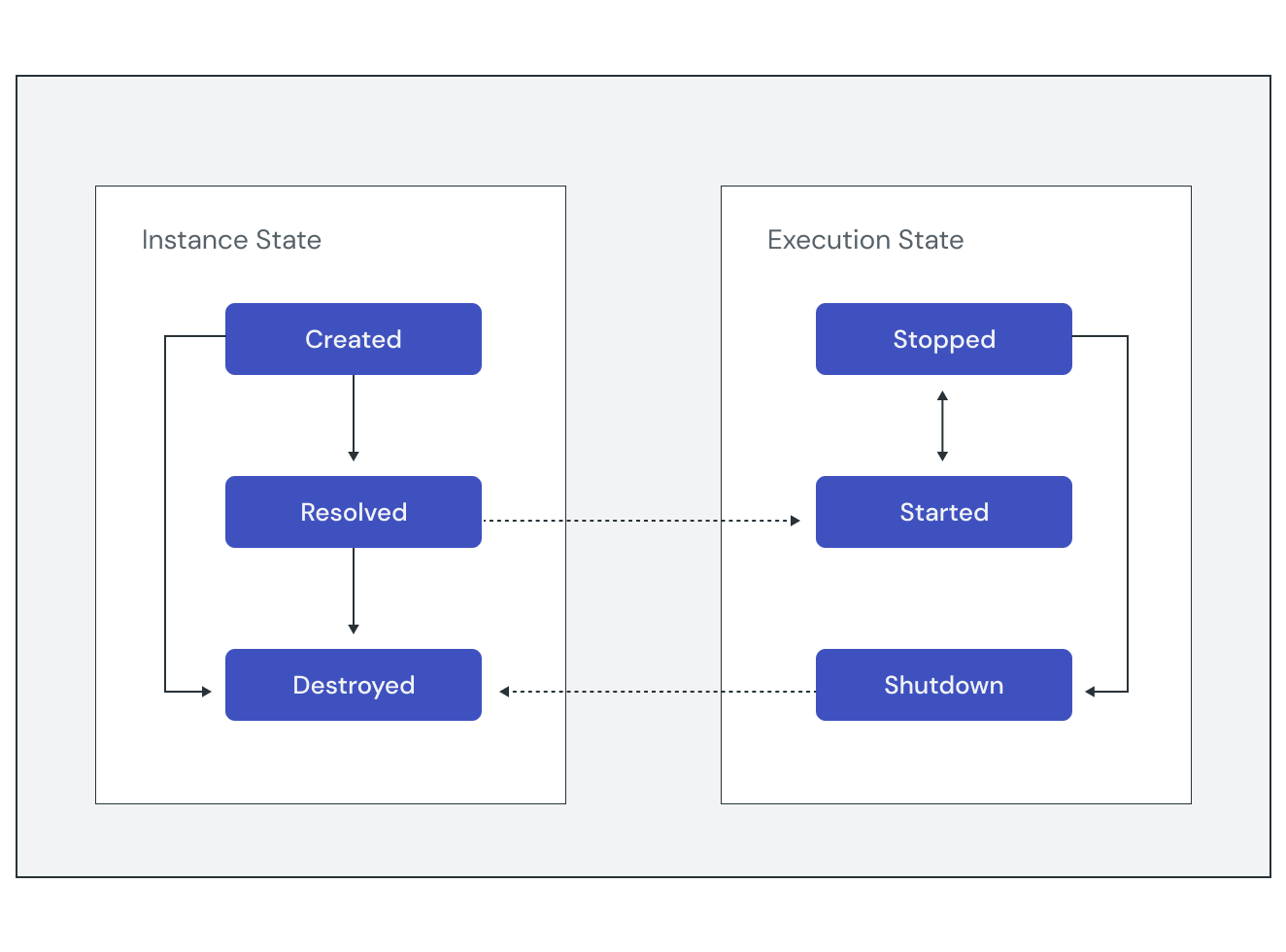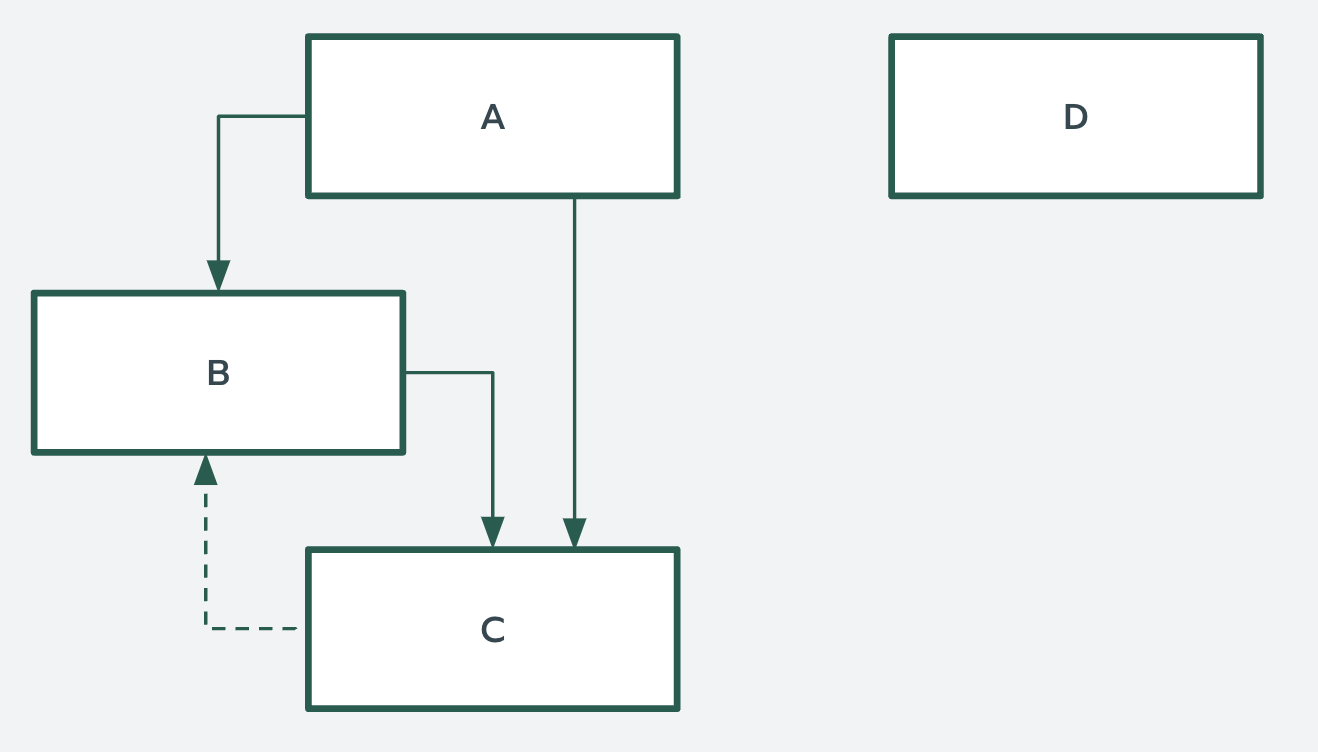This document describes how Component manager interacts with individual component instances to manage their lifecycle.
Lifecycle states
Component instances progress through the following major lifecycle states:

Component instances may retain isolated persistent state on a storage medium while they are not running, which can be used to help them maintain continuity across restarts.
Created
A component instance may be created in the following ways:
- Configured as the root component of Component manager.
- Statically discovered as the child of another component.
- Dynamically created at runtime in a collection.
Every component instance has a component URL that describes how to resolve the component, and a moniker that uniquely identifies the instance by its path from the root. For more details, see component identifiers.
Once created, a component instance can then be resolved or destroyed.
Resolved
Resolving a component instance fetches the component declaration for the
specified component URL. Component manager resolves component URLs by finding a
component resolver that supports a matching URL scheme in the
environment. Developers can resolve components manually using the
ffx component resolve command.
Components must successfully resolve before they can be started.
Started
Starting a component instance loads and runs the component's program and provides it access to the capabilities that it requires.
The most common reason for starting a component instance is when another
component binds to one of its exposed capabilities. Developers can
also start components manually using the ffx component start
command.
Once started, a component instance continues to run until it is stopped.
Stopped
Stopping a component instance terminates the component's program but preserves its persistent state. Components enter this state when their program exits, as defined by the component's runner.
The Component Framework may stop a component instance for the following reasons:
- The component is about to be destroyed.
- The system is shutting down.
A component can implement a lifecycle handler (example) to receive a notification of events such as impending termination. Note that components may not receive these events in circumstances such as resource exhaustion, crashes, or power failure.
Once stopped, a component instance may be restarted or shutdown.
Shutdown
Component manager sets the final execution state of a component instance to shutdown to indicate that it cannot be restarted and to signal that the instance can be safely destroyed.
Destroyed
A component instance may be destroyed in the following ways:
- Dynamically removed from a collection at runtime. This is also true if the component is a descendant of another component being removed.
Once destroyed, Component manager completely removes the instance from the component topology, including all persistent state. New instances of the same component will each have their own identity and state distinct from all prior instances.
Lifecycle actions
This section describes common actions used by the Component Framework to transition the lifecycle state of component instances.
Bind
A component instance A binds to another component instance B when A
connects to some capability that is provided by B. This causes component B
to start if it is not already running.
Concretely, there are two ways that A can bind to B:
Aconnects to a capability in its namespace which is exposed or offered byB. This is the most common way.Abinds to thefuchsia.component.Binderframework protocol which is exposed or offered byB. Unlike a traditional capability, this protocol is implemented by the component framework.
Shutdown ordering
When the component framework decides to shut down a component, it will shut down the component and its children in an order determined by their dependencies. This behavior is recursive which means that shutting down a component will shut down the full topology under that component.
Components within a realm are shut down in a specific order, which is based on the strong dependencies between those components. The dependencies between components form a Directed Acyclical Graph (DAG), and components are shut down in target-to-source order.
All capabilities are considered in the dependency graph. Capabilities are
offered as a strong dependency by default, but a client can offer a dependency
by specifying dependency: weak.
As an example, imagine a realm with components A, B, C, D.
There are the following offers:
Astrongly offers a capability toBandC.Bstrongly offers a capability toC.Cweakly offers a capability toB.
Here is a drawing of the realm in question:

The shutdown ordering would be the following:
DandCcan be shut down in any order as they have no dependents.Bcan then be shut down afterC.Acan then be shut down afterB.
Weak dependencies
Remember that the component dependencies forms a DAG, meaning there are no
cycles. This means that in the example above, C cannot strongly offer a
capability to A.
However, C is allowed to offer a capability to A with dependency: "weak".
A weak dependency is not considered to be a part of the dependency DAG and it will
not affect shutdown ordering.
